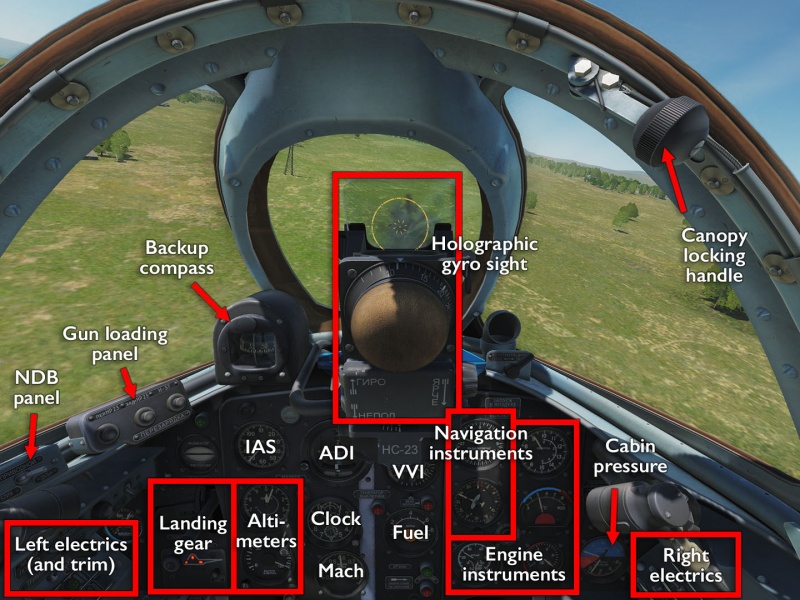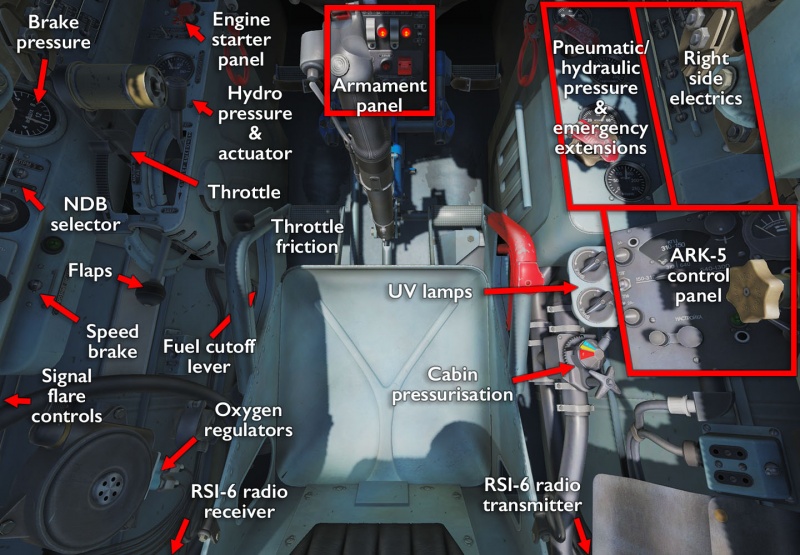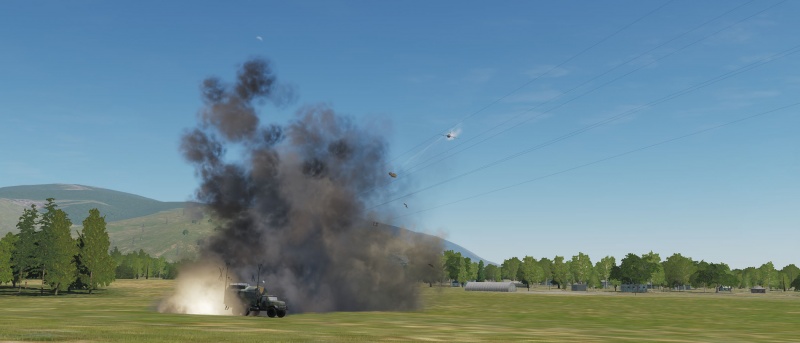MiG-15bis
The end of WWII, two radical new technologies entered warfare: nuclear weapons and jet engines. The threat of the former, carried by the B-29 long-range strategic bomber, mean that the latter had to be used to create a countermeasure. The MiG-15 was that countermeasure, and it turned out to be a very lethal threat to pretty much anything in the air at the time. It came as a nasty surprise in the skies over Korea and had no viable counter of its own until the introduction of the F-86.
Much like the same-era F-86F, the DCS World version of the MiG-15bis sits in a strange place between the earlier, almost completely mechanical and manual WWII prop fighters, and the systems-heavy and highly automated modern jet fighters. Between the two, the F-86F leans more towards the future, with its early missiles, automated sight, and bombing modes, whereas the MiG-15bis leans more towards the past, with its still rudimentary ground controls and its reliance on simple guns and bombs.
Features
Much like the F-86F, the leap forward the MiG-15bis represents needs to be measured against the WWII prop planes that preceded it, not with anything that followed afterwards (including the F-86F). Many of these advanced features are similar to what would soon be found in the Sabre, and for similar reasons:
- Speed brakes(!) to get (or stay) out of the high compressibility state when the flight controls no longer work properly.
- Stageless flaps for even more speed and lift control.
- A tricycle landing gear (but still differential braking rather than proper nose-wheel steering or toe brakes).
- A 37mm cannon to burst B-29:s (and a pair of 23mm cannons for smaller targets).
- A very… curious split radio system that uses (anything but) easily remembered “wave numbers” rather than imperialist pigdog frequencies (1 wave number = 0.025 MHz).
- ARK-5 NDB navigation.
- A whimsical attitude to instrument placement.
Flying the MiG-21bis
The MiG-21bis was built to quickly climb to and catch up with strategic bombers as they came near to, or crossed over, the Soviet borders. Even so, it was not a Mach-capable aircraft — it did not need to be — nor a nimble dive bomber. Its early swept-wing design and jet engine were respectively vulnerable to compressibility issues at higher speeds leading to loss of effectiveness in the controls, and to compressors stalls if flown at high angles of attack or asked to quickly jump between different power levels.
Both of these problems are shared with the F-86F — the MiG-15bis just suffers from them earlier, and therefore prefers to hit quickly and climb up to safety where the Sabre performs less well. At the other end of the spectrum, the MiG-15 really dislikes low speed as well — getting awfully wobbly quite early, and with its slow-responding engine, will require quite a bit of time (and consequently altitude) to get out of that state. Be careful not to underspeed during landings, because it is the worst combination of circumstances to get out of.
Cockpit overview
Getting into the air
Shooting something
Links and files
- Vehicle Size Chart for sight adjustments.
- Chuck's MiG-15bis guide.
- DCS: MiG-15bis by Belsimtek in the DCS shop.
Related DCS modules
- The Museum Relic campaign for F-86F and MiG-15.
More information
- Mikoyan-Gurevich MiG-15 on wikpedia.
- MiG-15 FAGOT on globalsecurity.org
- Bunyap's Test Flight - DCS: MiG-15 bis Fagot video series.





